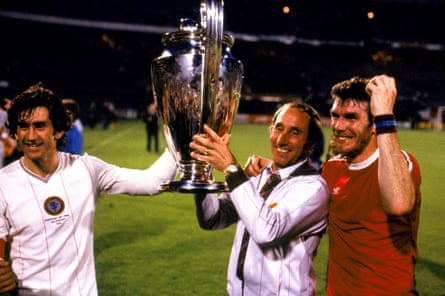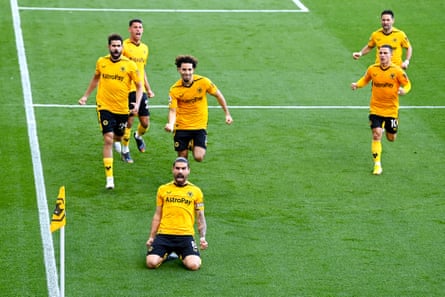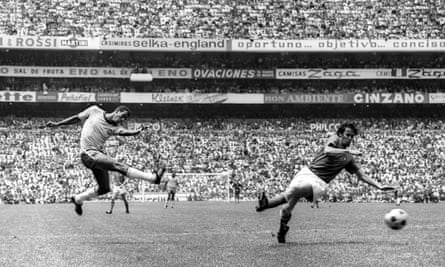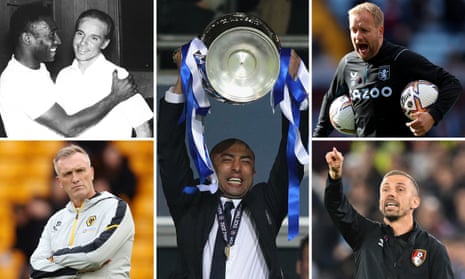Not many people beyond the staff at Aston Villa would have heard of Aaron Danks before he took over from Steven Gerrard last week. Following a dismal 3-0 defeat to Fulham, Danks was put in charge and had just two days to prepare for a meeting with another west London side. Villa’s 4-0 victory over Brentford was one of the most striking examples of a new-manager bounce in recent times.
Danks could barely contain his delight in his post-match press conference. “It’s been a really exciting experience,” he said. “I’m absolutely shattered and exhausted now because it’s been three really tough days.” His managerial reign was over the following day as Unai Emery was appointed as permanent manager at Villa Park. Danks can walk away with his head held high, with an impressive albeit brief record.
Maybe Danks drew inspiration from another Villa caretaker who took over the club back in 1982 when Ron Saunders jumped ship to local rivals Birmingham City. As Saunders had guided Villa to the First Division title the season before his departure was a seismic shock for the club. Villa’s chief scout, Tony Barton, was jettisoned into the managerial hot seat. Like Danks, Barton inherited a team that had just suffered a heavy defeat, 4-1 to Manchester United.
As Barton began his stint as boss, the champions were languishing in 15th place, nearer the relegation places than challenging for Europe. Barton led them on a decent run that included taking them to the semi-final of the European Cup. Once they had reached their first ever semi-final in a European competition, Barton was rewarded with a permanent contract and Villa progressed to the final, where they beat Bayern Munich 1-0 courtesy of a Peter Withe goal.

Another caretaker manager who achieved European glory was Roberto di Matteo after he was placed in interim charge at Chelsea when André Villas-Boas was sacked in March 2012. Chelsea were a long way off the pace in the Premier League, but Di Matteo did achieve a remarkable cup double, beating Liverpool in the FA Cup final and winning the club’s first European Cup by overcoming Bayern Munich in the final on penalties. Di Matteo was duly given a two-year contract but lasted until November, when he was dismissed after a defeat to Juventus in the Champions League.
Danks’ short spell at Villa meant that, for a few days at least, there were three caretakers in charge of Premier League clubs. Gary O’Neil had the unenviable task of picking up a Bournemouth team who had just suffered the ignominy of a record-equalling Premier League defeat after losing 9-0 at Anfield in late August. Prior to their two narrow losses to Southampton and West Ham recently, Bournemouth had been on an unbeaten run of six matches, with two wins and four draws that catapulted the club into the top half of the table.
Steve Davis has not had quite the same positive impact at Wolves since stepping into Bruno Lage’s shoes. But after several managers, including Julen Lopetegui and Michael Beale, turned down the opportunity to take over, Davis and his assistant James Collins were given a vote of confidence by Wolves chairman Jeff Shi. “We have complete faith in their ability and leadership to continue their roles into the World Cup break and new year,” said the chairman.

Mário Zagallo is undoubtedly the most successful caretaker manager in football history. In March 1970, the Brazilian football confederation decided to replace their manager, João Saldanha, only a few months before the World Cup was due to start in Mexico. Saldanha had led Brazil through qualifying with ease – they won all six matches while scoring 23 and conceding just two – so this was less to do with football and more to do with politics and a personality clash.
Saldanha had become a journalist after his playing days and he was not afraid of making enemies with his former colleagues. At one point, he sought to settle an argument with a former journalistic colleague with a loaded gun. The Brazilian confederation has assumed that appointing a journalist would make other writers less critical of the team but that only worked up to a point.
Saldanha’s communist beliefs did not go down well with the right-wing military dictator Emílio Garrastazu Médici, who wanted to use football to stoke up national pride. The manager also fell out with his assistant – who said he was impossible to work with – and dared to exclude Pelé from his team on the spurious claim that the player’s eyesight was deteriorating.
Zagallo, who as a player had won the World Cup in 1958 and 1962 alongside Pelé, was not first choice to replace Saldanha but he ended up getting the job. Zagallo had been the manager of club side Botafogo since 1966 and, although he helped the national side as a coach now and again, he had little experience of international football.
He did not hesitate to bring his former teammate Pelé back into the fold and also changed from Saldanha’s 4-2-4 formation, opting for a more fluid 4-5-1 that allowed the players a bit more freedom. Tostão, Gerson and Jairzinho revelled in the new shape and that 1970 Brazil team are widely regarded as the best World Cup side ever. Their imperious 4-1 triumph over Italy in the final is still viewed as the ultimate victory on an international stage. The success culminated in the fourth goal, which rubber-stamped a performance of grace and technique as Carlos Alberto finished an arrowed shot into the far corner.

Brazil’s third title in four tournaments secured them the Jules Rimet trophy for good and, having become the first man to win the World Cup as both player and manager, Zagallo was made the permanent manager. With Danks already gone after one match at the helm, it remains to be seen how long Davis or O’Neil will last. They are unlikely to achieve as much as their illustrious predecessors, but sometimes a foot in the door is all a new boss needs.


Comments (…)
Sign in or create your Guardian account to join the discussion